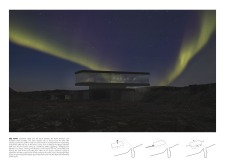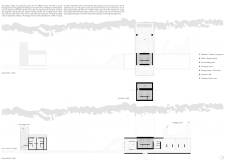5 key facts about this project
At its core, the project is designed to serve as a multifunctional space, accommodating a variety of activities and fostering interaction among its users. The layout is structured to maximize usability while promoting an inclusive atmosphere. Thoughtfully integrated communal areas encourage social engagement, facilitating a sense of belonging and connectivity among visitors. Each zone within the design has been meticulously planned to cater to different functions, ensuring that the project serves not just as a physical space but as a catalyst for community interaction.
The architectural design showcases a remarkable balance between aesthetic appeal and practicality. The choice of materials plays a crucial role in achieving this balance, emphasizing sustainability while enhancing the visual sophistication of the structure. The project utilizes locally sourced timber, reinforced concrete, and glass, each selected for its durability and environmental considerations. Timber offers warmth and a natural aesthetic, contributing to the building's visual identity while promoting environmental stewardship. The use of glass in strategic locations ensures ample natural light permeates the interior spaces, fostering a connection with the outside environment, reducing the dependence on artificial lighting during the day, and enriching the user's experience.
The building's form displays a unique interplay between geometric shapes and organic lines, creating a visually dynamic façade that harmonizes with its surroundings. The roofline undulates gently, suggesting a wave-like movement that reflects the surrounding landscape, while operable windows and shaded overhangs demonstrate a commitment to passive design principles. This adaptability not only enhances thermal performance but also allows for flexible interior layouts that can evolve with the users' needs over time.
Furthermore, the project embraces technological advancements, incorporating smart building systems that optimize energy efficiency and user comfort. These systems manage lighting, temperature, and energy consumption, showcasing the potential for a harmonious relationship between cutting-edge technology and sustainable design solutions. This forward-thinking approach reinforces the project’s identity as a modern architectural endeavor that prioritizes environmental responsibility.
The spatial arrangement within the project fosters ease of circulation and accessibility, reflecting a thoughtful understanding of human interaction. Pathways have been designed to be wide and welcoming, accommodating both foot traffic and community activities. The integration of greenery through vertical gardens and landscaped areas not only enhances the aesthetic quality of the project but also contributes to air quality and biodiversity, emphasizing a holistic approach to urban design.
Unique design approaches evident in this project include the use of modular components, which facilitate rapid construction and flexibility in adaptations for future needs. This strategy aligns with contemporary architectural trends designed to respond to demographic and environmental changes, ensuring longevity and resilience in urban development. The careful placement of each component contributes to an overall sense of cohesion, while also providing a visual rhythm that invites exploration.
This architectural project stands as a testament to the potential of design to enrich community life and create spaces that are both functional and inspiring. The thoughtful consideration of materials, user interaction, and environmental context makes it a relevant example in today’s architectural landscape. To further appreciate the intricacies of this undertaking, readers are encouraged to explore the architectural plans, architectural sections, and architectural designs that detail the project’s innovative ideas and underscore its relevance in contemporary architecture. Engaging with these materials will provide deeper insights into the design choices and functionality that characterize this exceptional project.


























